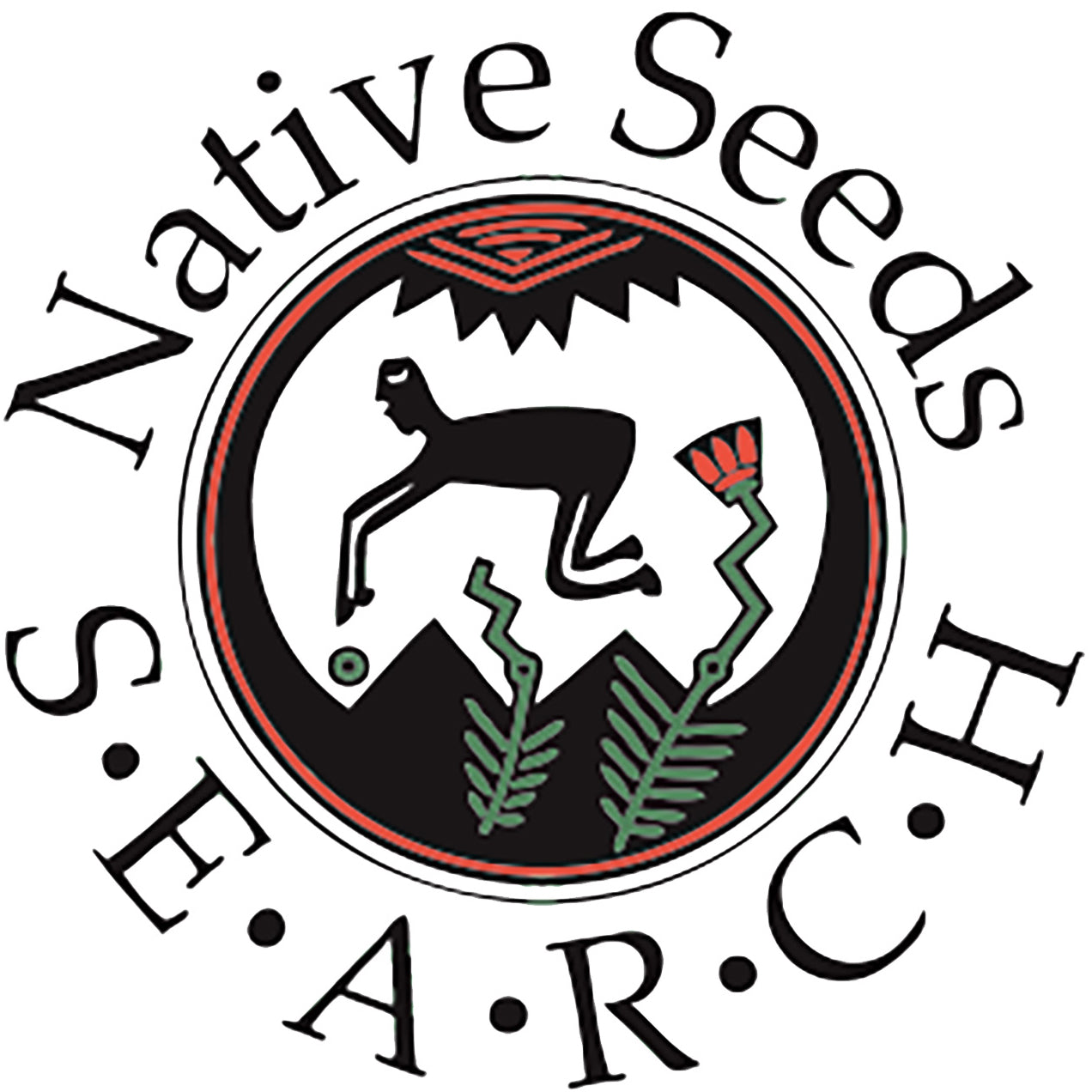
By Michelle Langmaid, Volunteer & Production Coordinator
Behind the scenes, the Adopt-A-Crop campaign can feel like an emotional rollercoaster: Starting with small handfuls of rare seeds, we plant them but only some germinate; we worry about having a large enough population size to maintain healthy genetics; when they do break intrepidly through the soil the squirrels eat them, or perhaps worse, rabbits nip seedlings off at the base only to decide that they don’t want to eat them; torrential winds cause lodging; and if all that isn’t enough, some plague-proportion insect invades metropolitan Tucson, sucking the life out of tender young seedlings like Harry Potter’s dementors.
The story is no different with Yuma Red Okra. In fact, we were surprised to realize just how much the squirrels enjoy okra leaves! Nevertheless, there are upwards of 30 healthy plants growing at the Conservation Center in Tucson in a neat, drip-irrigated row. This particular okra variety is a new accession for the seed bank at Native Seeds/SEARCH, donated by long-time member and volunteer, Ed Kingham. Ed was gifted seed when he lived in Yuma, AZ in the 80’s and has continued to grow and preserve it both in Southern Arizona and Carson City, Nevada to the present day. A plant that can thrive in the low desert and the high desert - how stunningly cool! Yeah, that’s what we thought, too.

Ed Kingham in his Carson City garden.
But wait…okra isn’t native to the Southwest! Why is it in the seedbank? Here’s a big not-secret for you: many of the seeds in the vault are not native to this region. As with some of the other crops we conserve, okra was domesticated in the Old World. There is some debate as to where, but many credit its origin to Ethiopia or India. It likely came to the Americas via colonists and African slaves in the 17th century. That said, the crops in the seed bank have a long agricultural history here in the Southwest and are well-adapted to our dry, hot conditions.
Saving your own seeds from okra is pretty easy compared to some other vegetables. Okra plants have perfect flowers (both male and female parts on the same flower) and will readily self-pollinate. However, pollinators are often drawn to the showy flowers, so cross-pollination between plants does occur. (So if you’re the ambitious type and want to save seed from two different types of okra, they should be planted a safe distance away from each other [500-1600’]). To harvest for seed you have to be patient and let the pods mature past the point of being edible. The pods (or capsules, botanically) turn beautifully and inedibly woody, and when shaken like a rattle, the alligator-green seeds can be heard inside. Be sure to collect them before they fall to the ground, then crack the pods open to collect the seeds.
Yuma Red is touted as having a low mucilage (slime) factor, which can be an attractive trait to those who aren’t already excited about eating okra. To be sure, “slimy” is not a quality of food that one usually appreciates, but it serves a purpose. For the plant, mucilage plays an important part in protective and reproductive aspects of the life cycle. And like other plants adapted to hot dry climates (think of Sonoran cholla buds) it also provides a viscous storage and transport medium for nutrients and water that the plant needs to stay hydrated. But the slime is good for us too: its soluble fiber provides improved digestion, improved management of diabetes, and lower blood cholesterol. Sounds like the squirrels know what they’re doing!
You don’t have to let the slime get in the way of enjoying this delectable vegetable. With the correct cooking technique, the slime can be eliminated altogether. Don’t believe me? Try it! The key is medium to high heat, generous oil, and very little moisture – so use a cast iron pan, roast, or grill. Smaller, younger pods also have less slime and are more tender. So when someone mentions okra wipe that disgusted look off your face and grab an apron, you are in for a revelation. If you’re convinced that you need okra today, don’t wait for the Yuma Red to come out of the field. You can purchase other heat-loving varieties of okra here, and get them in the ground as soon as you can!
If planting okra isn't in the cards, you can still support it through this year's Adopt-A-Crop campaign. Learn more about Adopt-A-Crop today!

